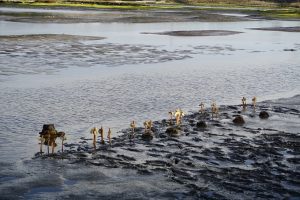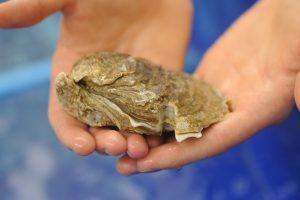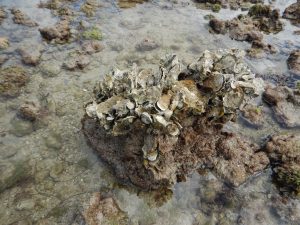Oysters provide important ecosystem services and economic value. However, reduced natural stocks need to be restored. Oyster restoration is growing rapidly worldwide because there are fewer wild oysters to be found, their increased importance as a food item, and the species’ provision of ecosystem services. Identifying sustainable substrates for restoring the oyster population is key to the success of this endeavor. North Carolina Sea Grant researchers quantified the effects of different substrate types and presence/absence of boring sponge on oyster larval settlement. Boring sponge can damage oysters by boring into the bivalves’ shells, which can weaken the shell. In some cases, the damage can kill the oysters. The scientists also studied subsequent growth and survival with and without the presence of boring sponge. Concrete substrates provided the best combination of those tested in terms of balancing high larval settlement, post-settlement growth and survival and inhibition of boring sponge. Because of this research, the North Carolina Division of Marine Fisheries and U.S. Army Corps of Engineers have switched to using concrete for oyster restoration in North Carolina. Photo: Anna Windle and Sarah Poulin



